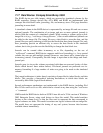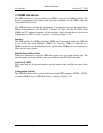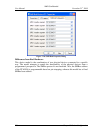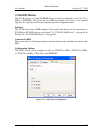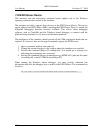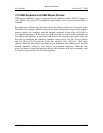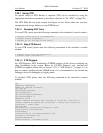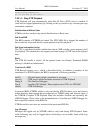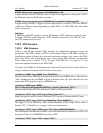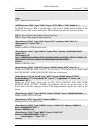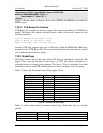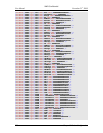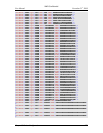
AMD Confidential
User Manual November 21
st
, 2008
112 Chapter 7: Device Configuration
SetErrorLogFileEnabled 1
go [or hit Run on the shell]
7.22.1.4 Stop XTR Playback
XTR Playback will stop automatically when End Of Trace (EOT) event is reached. It
could also be stopped prematurely by clicking on the stop button or by executing the stop
automation command.
Initialization and Reset State
XTR Record does not have any special Initialization or Reset state.
Init from BSD
The BSD contents of XTRNB are loaded. The XTR XML file is skipped the number of
lines to the last event read and the system prepares itself for playback.
Init from Automation Script
The CPU is initialized from the initialization data in XML and the system prepares itself
for playback. This method does not support persistent storage of XTR state to be replayed
later.
Reset
The XTR file handle is closed. All the queued events are flushed. Simulated DIMM
memory is flushed and unallocated.
Contents of a BSD
XTR Record contains xtrsvc, which is described below, in addition to modules in the
simulation. For XTR Playback, the BSD is composed of following modules:
shell:0 : The shell under which a simulation is executed.
xtrsvc:0 : XTR service which facilitates execution of XTR Playback.
Debug:0 : The SimNow Debugger.
Cpu:0 : AweSim CPU Module. There might be more CPUs for XTR-MP.
xtrnb:0 : XTR Northbridge.
In persisted BSD, XTRNB, which is only used during XTR Playback, saves and restores
events that have been queued but not triggered yet, DIMM image and internal states of
the XTRNB. Complete XTR Playback setup also includes AweSim and optionally the
AMD Debugger. Please refer to the documentation of AweSim and AMD Debugger for
their respective contents in the BSD file.
XTR Record does not store any contents in the persistent BSD file.
Log Messages
Messages are logged only by XTRNB, which is only used during XTR Playback. Some
of the following may only be logged when xtrnb.debug is set to enable. Some of the Log
messages are:



